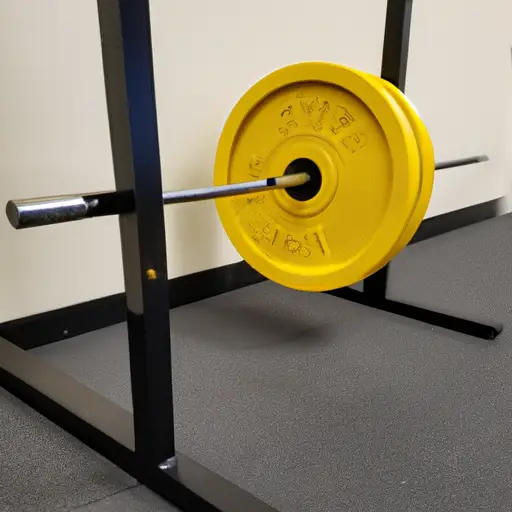Unlock Joint Mobility with Strength Training
Welcome to the Wonderful World of Strength Training!
Hey there! Are you ready to pump some iron and get stronger than ever? Well, you’ve come to the right place. In this post, we’re going to talk all about strength training and how it can benefit your joint mobility. So let’s get started!
First things first, let’s define what we mean by strength training. It’s simply any type of exercise or activity that involves resistance with the goal of building and strengthening muscle. This can include weightlifting, resistance band exercises, and bodyweight exercises like push-ups and squats.
So what are some of the benefits of strength training? For one, it can help improve joint mobility. When you strengthen the muscles around your joints, you’re providing extra support and stability to those areas. This can help increase your range of motion and make it easier to move without pain or discomfort.
How Strength Training Can Help You Move Better
Let me tell you, folks, there’s nothing like the feeling of being able to move your body freely and pain-free. That’s where strength training comes in – it can help you improve your joint mobility, making tasks that used to be a struggle much easier.
When you engage in strength training, you’re essentially strengthening the muscles around your joints. This added strength can improve your range of motion – that’s the distance and direction in which you can move your joints. With a larger range of motion, you’ll feel more flexible, move more easily, and potentially lessen any joint pain you may have.

The benefits of strength training on joint mobility have been well documented in numerous studies. For example, one study found that older adults who participated in a strength training program for 16 weeks experienced improved knee joint mobility compared to those who didn’t engage in any strength training. Additionally, athletes with joint pain have also seen improvements in mobility when incorporating strength training into their workouts.
If you’re interested in starting a strength training program, there are a few things to keep in mind. First, it’s always a good idea to consult with a qualified trainer who can help you create a program that’s safe and effective for your body. Additionally, choosing low-impact exercises can help protect your joints from unnecessary strain. Finally, focusing on proper form throughout your workouts is essential to avoid injury and ensure that you’re targeting the right muscle groups.
In conclusion, if you’re looking to improve your joint mobility, strength training may be just the ticket. Not only can it help you move better, but it can also potentially lessen any pain or discomfort you may be experiencing. So, why not give it a try?
Research on Strength Training and Joint Mobility
Now, let’s dive into the research on how strength training can improve joint mobility. Studies have shown that strength training can not only help ease joint pain but can also increase joint flexibility and range of motion.
In one study published in the Journal of Rehabilitation Medicine, participants who strength trained for eight weeks experienced significantly improved knee joint mobility compared to the control group. Another study published in the International Journal of Sports Medicine found that strength training improved joint function in athletes with knee joint pain.
It’s important to note that while these studies focus on knee joints, strength training can benefit joints throughout the body. Regular strength training can strengthen the muscles around joints, allowing for better support and stability. This increased muscular strength can also improve joint range of motion over time.
However, it’s important to approach strength training with proper technique to avoid injury. Before starting a strength training program, it’s always a good idea to consult with a certified trainer or physical therapist and choose low-impact exercises that won’t put unnecessary strain on the joints.
With consistent effort and guided support from a professional, strength training can be an effective tool for improving joint mobility and overall physical health. For more guidance and information on the benefits of strength training for joint mobility, check out this article.
Tips for Getting Started with Strength Training
So, you’ve decided to give strength training a shot, but you’re not quite sure where to start. As a certified trainer, I’ve seen many beginners struggle with the same issues, but don’t worry, I’ve got your back! Here are some tips to help you get started:
Consult a Trainer
If you’re completely new to strength training, it’s essential to find a trainer who can guide you through the process. A trainer can help you develop a customized plan based on your goals and fitness level, and also ensure that you’re using proper form and technique. Don’t worry about feeling intimidated or embarrassed – we all have to start somewhere, and a good trainer will make you feel comfortable.
Choose Low-Impact Exercises
Especially if you have joint issues, it’s vital to select exercises that are low-impact. This means movements that don’t put too much strain on your joints, such as squats, lunges, or cable rows. Avoid exercises that involve a lot of jumping or sudden movements, like burpees. These can be hard on your joints and could lead to injury.
Focus on Proper Form
One of the most important things to remember when strength training is to prioritize proper form over the amount of weight you’re lifting. It’s better to lift lighter weights with proper form than to lift more weight with bad form. Proper form not only helps you avoid injury but also ensures that you’re using the right muscles and getting the most benefit from the exercise.
Remember to start slow and be patient with yourself. Strength training is a journey, and it takes time to see progress. Stay consistent, listen to your body, and don’t forget to enjoy the process!
That’s a Wrap: Concluding Thoughts on Strength Training for Improved Joint Mobility!
Well folks, there you have it! From defining strength training and outlining its benefits, to exploring how it can improve joint mobility and sharing tips for getting started, we’ve covered a lot of ground in this blog post.
Overall, it’s clear that incorporating strength training into your fitness routine can lead to a variety of positive outcomes, including improved joint mobility. By strengthening the muscles around your joints, you can increase your range of motion and reduce your risk of injury. And don’t just take my word for it – there’s plenty of research out there to back up these claims.
As with any new fitness endeavor, it’s important to start slowly and consult a trainer if you’re not sure where to begin. Choosing low-impact exercises and paying attention to proper form are also crucial for avoiding injury and maximizing your results.
So, whether you’re a seasoned fitness enthusiast or a newbie in the gym, consider adding some strength training to your routine and see how it can benefit your joint health and overall well-being. Happy lifting!






